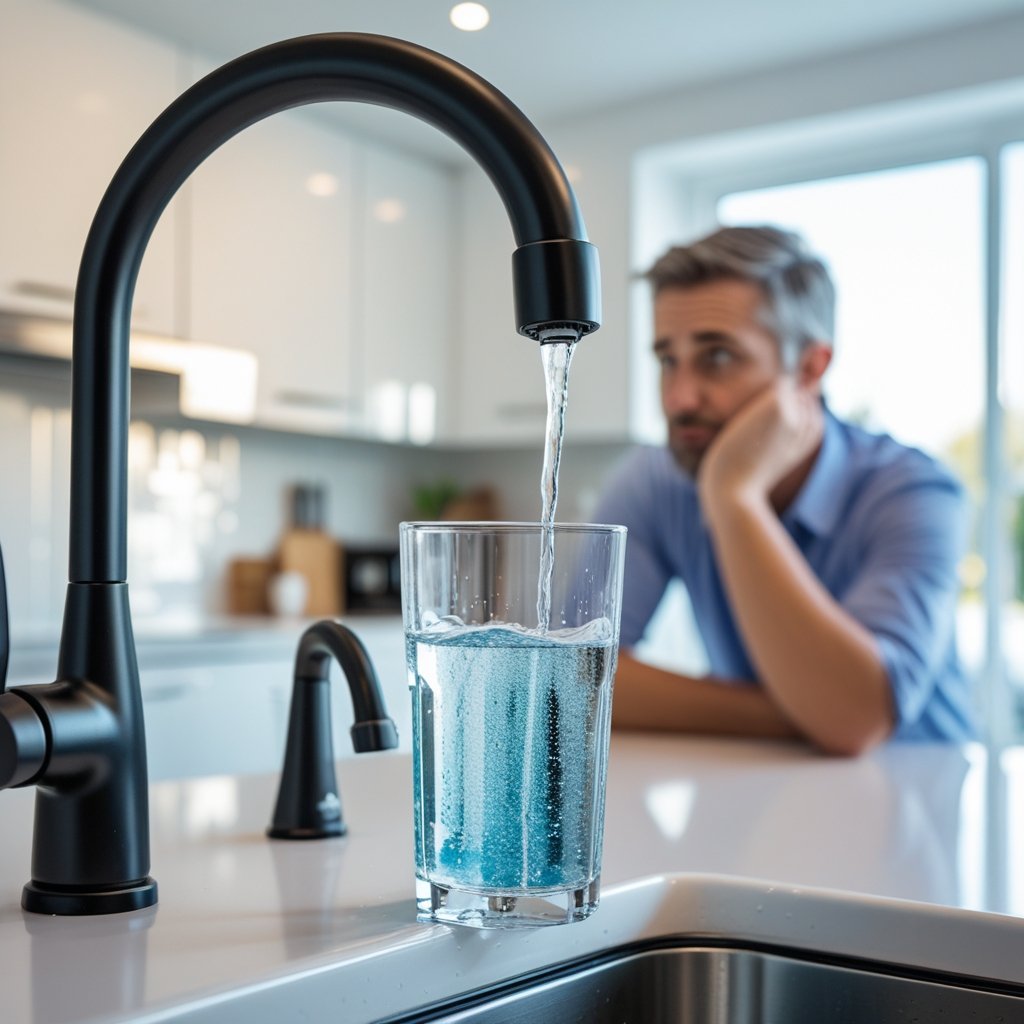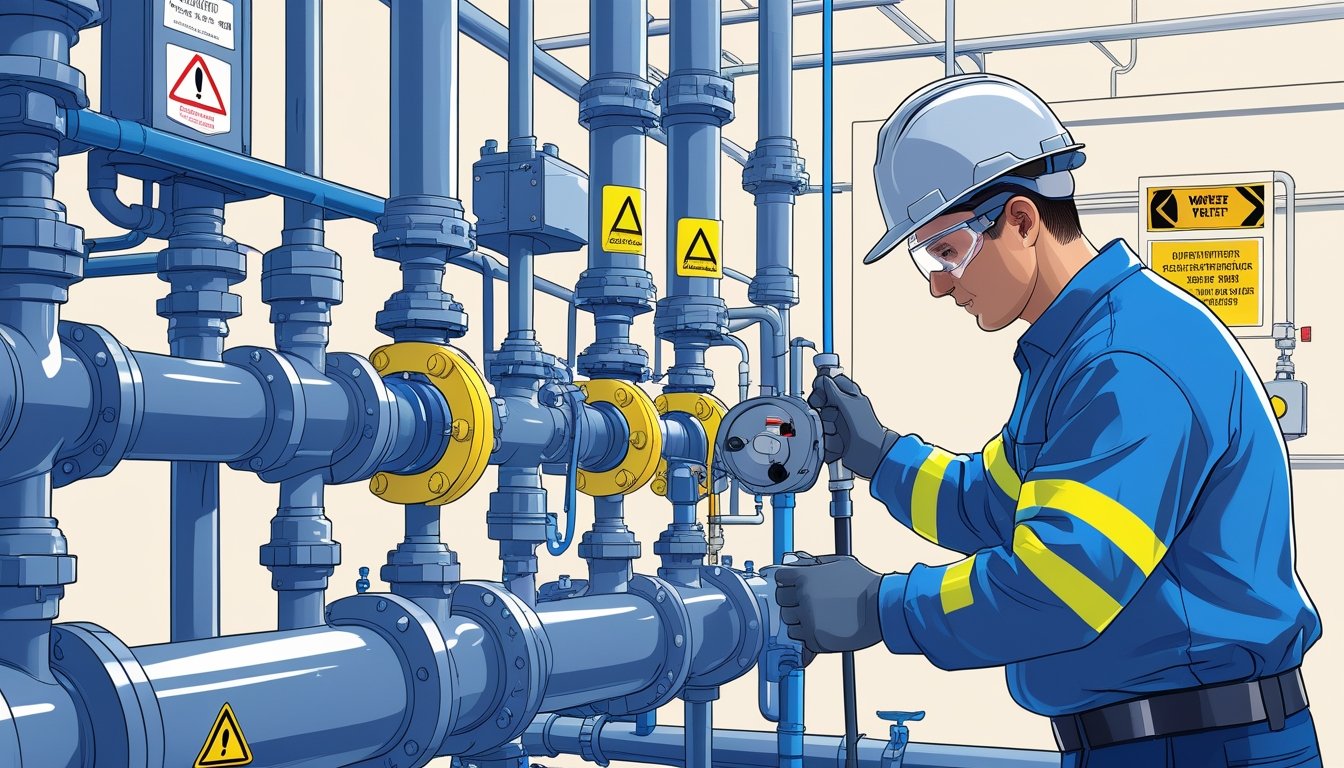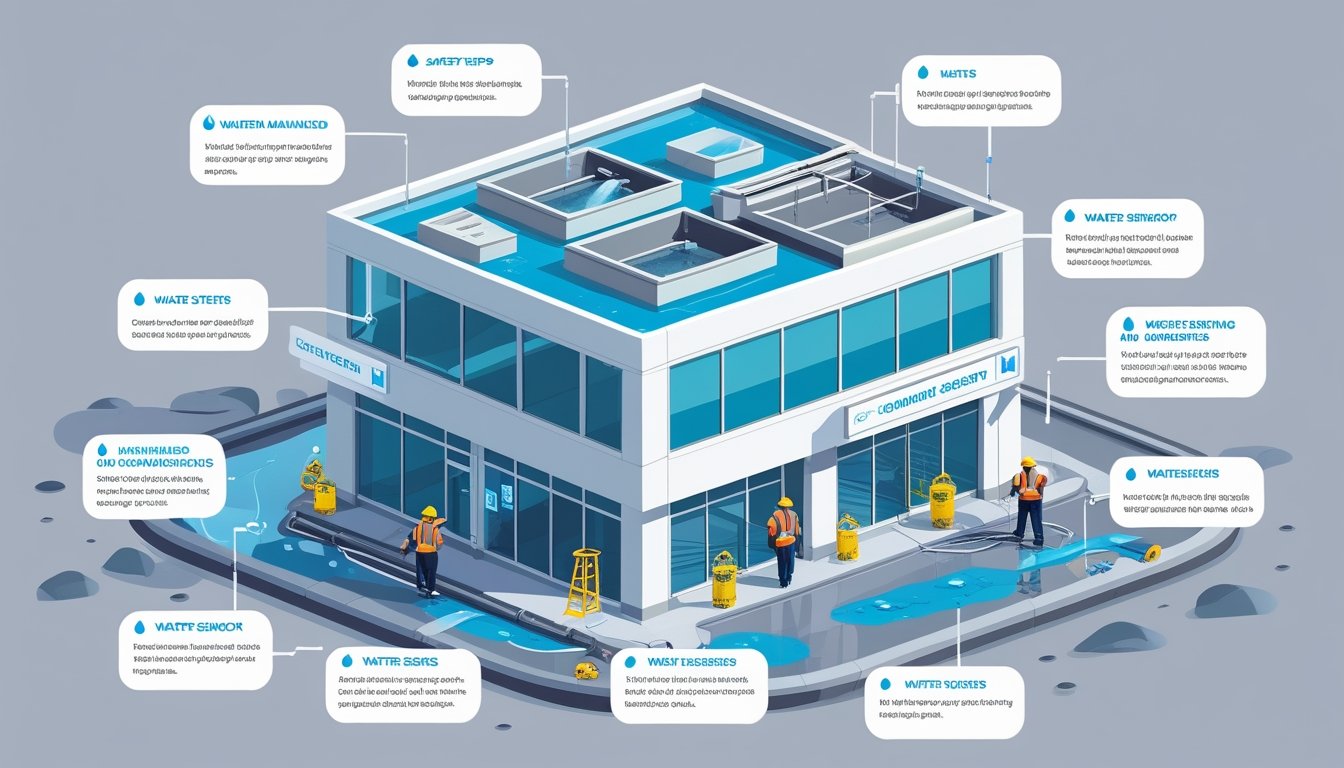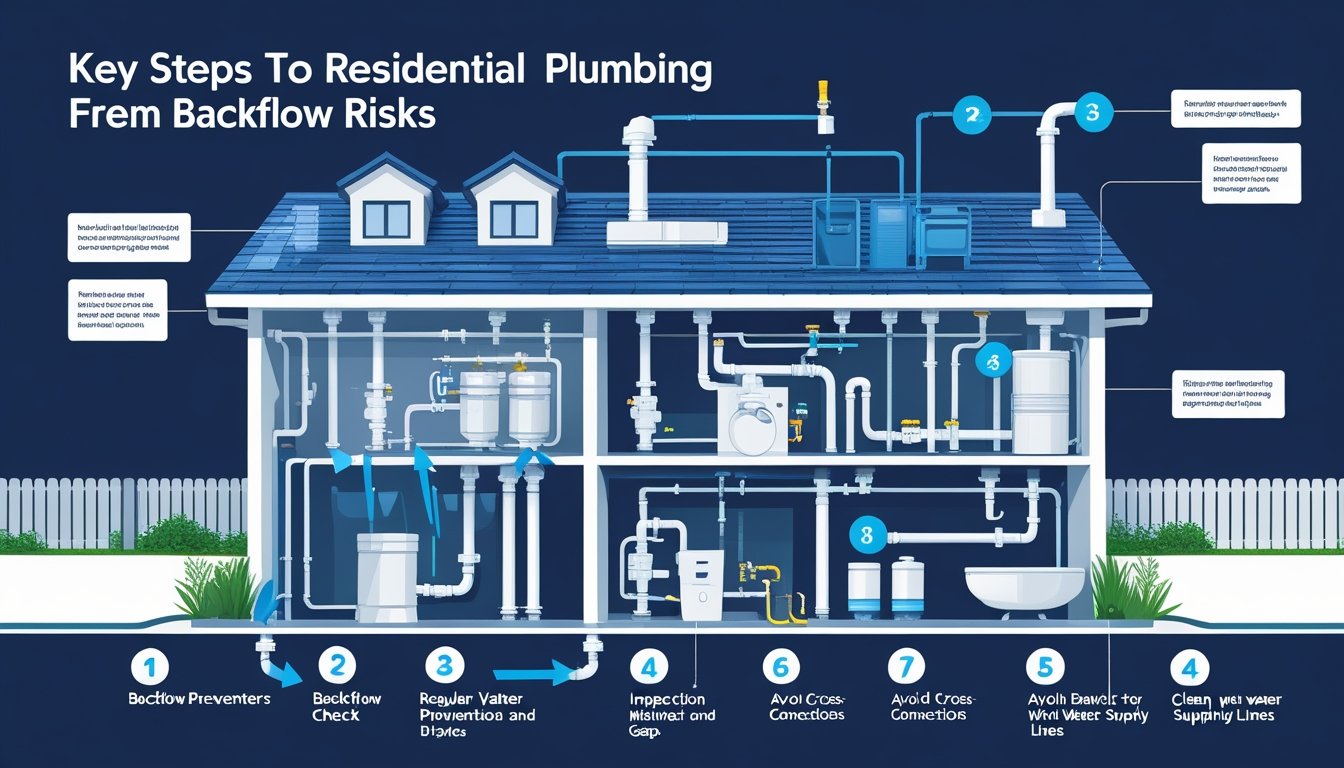Ever taken a sip from the tap and thought, “Wait, what’s that flavor?” Weird-tasting water can pop up for all sorts of reasons—chlorine, metals, even bacteria lurking in the local supply. Most of the time, it’s just the treatment chemicals doing their job, but now and then, a strange taste hints at something you should check out.
If your backflow preventer isn’t working right, you might get odd flavors too. This device stops dirty water from sneaking back into your pipes. Pacific Backflow in San Diego County, for example, can test and repair these systems so your water stays clean and, well, drinkable.
Figuring out why your water tastes off helps you decide if you need a pro or if you can fix it yourself. Let’s dig into what messes with water flavor and how to bring back that fresh taste.
Common Reasons Your Water Tastes Weird
Strange-tasting water can come from a bunch of things—treatment chemicals, pipe issues, minerals, even algae. Knowing the culprit helps you figure out your next move.
Chlorine and Chemical Additives
Water plants add chlorine and other chemicals to kill germs. Sometimes, that leaves behind a sharp, bleachy taste or a bitter finish.
Chlorine levels shift depending on your area and even the season. If your water tastes like a swimming pool, try running the tap for a couple minutes. A home water filter can help too. But if the taste is really strong, maybe call your water provider or get your water tested.
High Mineral Content
Metallic or salty flavors usually mean there’s a lot of iron, copper, or magnesium in your water. These minerals can come from the ground or from old pipes. Iron, for instance, can make water taste rusty and look reddish-brown.
If you pick up a metallic taste, old plumbing might be to blame. Hard water—full of calcium and magnesium—can taste chalky and leave crusty stuff on fixtures. A water softener or a good filter can cut down on these minerals.
Algae or Organic Contaminants
Sometimes water just tastes… earthy. That’s often algae or organic stuff from lakes and rivers getting into the supply.
If you get a dirt, plant, or fishy flavor, organic contamination could be the cause. Usually it’s not dangerous, just gross. Filters that target organic compounds can help. People living near lakes or rivers might notice this more after heavy rain or when it gets warm.
Old or Corroded Pipes
Old metal pipes can mess with both taste and safety. As pipes corrode, they shed metals like lead, iron, or copper into your water, making it taste metallic or bitter.
If your water looks rusty or brown, that’s usually corrosion or gunk building up inside pipes. This can also let in contaminants through backflow. Pacific Backflow offers testing and repairs to keep your water safe and tasting right. Got an older house? It’s probably time for a plumbing check.
How Location and Source Affect Water Flavor
Where your water comes from plays a big role in how it tastes. The source, the season, and whether you’re in the city or country all change things up.
Differences Between Tap and Well Water
Tap water gets treated before it hits your house. Chlorine and other chemicals kill bacteria, but you might notice a chemical or “clean” taste. Old pipes can add a metallic tang if metals like copper or iron leach in.
Well water is a different beast. It tends to taste stronger—earthy, salty, maybe even bitter—depending on what’s in the ground. No treatment means it can also carry bacteria or sulfur, which adds odor or odd flavors.
If you’re on a well, regular testing is smart. For tap water, companies like Pacific Backflow help keep backflow systems working so nothing unwanted gets in.
Seasonal Changes in Water Supply
Water taste shifts with the seasons. After rain or in spring, water can pick up dirt, plant matter, or farm chemicals, making it taste muddy or grassy.
In dry months, mineral flavors get stronger since there’s less water to dilute them. Utilities sometimes tweak chemical levels depending on the season, which can change taste too.
If your water tastes different in summer versus winter, that’s pretty normal. But if it suddenly gets nasty, it might be time for a system check.
Urban Versus Rural Water
City water usually comes from big reservoirs or rivers and gets treated a lot. That means regular testing but also more chlorine or chemical flavors.
Country water often comes from wells or small sources. It can pick up minerals or runoff from soil, farms, or animals, giving it a stronger taste or smell.
City pipes can add their own issues—think old plumbing or pollution. Rural water risks more from farm chemicals or natural minerals.
In San Diego County, Pacific Backflow helps protect water quality with backflow testing and repairs, wherever you live.
Household Factors Impacting Water Taste
Sometimes, the problem’s right at home. The age and type of your pipes, or even your water heater, can mess with taste.
Plumbing Materials and Age
Old pipes—especially iron or copper—can leak tiny bits of metal into your water, making it taste metallic or rusty.
Plastic pipes don’t usually affect taste, but if they’re ancient, they can break down and mess with water quality. Corrosion in old plumbing can let in particles that change the flavor or color.
If water looks cloudy or stains your sink, aging pipes might be the culprit. In San Diego, lots of homes have plumbing that’s decades old, so regular checks make sense.
Water Heater Issues
Water heaters can be sneaky. If the temperature’s cranked up, metals leach into the water faster, sometimes giving it a metallic or even rotten egg smell.
Sediment builds up in the tank over time, making water taste bitter or smell funky. Flushing the heater once a year clears this out.
Bacteria can also grow in heaters if water just sits around warm for too long, adding weird odors. Regular maintenance and flushing help stop that.
If only your hot water smells odd, your heater’s probably the issue. Pacific Backflow can check things out to keep your water clean and decent-tasting.
Environmental Influences on Water Taste
Stuff happening around your home—like construction or changes at the water treatment plant—can change what your water tastes like.
Nearby Construction or Industrial Activity
Construction nearby can kick up dirt and debris that sneak into the water supply, causing metallic, muddy, or bitter flavors.
Factories and industrial sites sometimes leak chemicals into local water, adding unwanted tastes like chlorine or minerals.
If construction rattles old pipes, leaks might let in more particles, creating odd flavors or smells at your tap.
Water Treatment Plant Changes
Treatment plants sometimes switch up their process—different chemicals, stronger disinfectants, or new filters. Any of that can change how your water tastes, even if just for a few days.
If your water tastes weird for a while, call your provider or get your plumbing checked. Pacific Backflow can make sure your backflow devices are working to protect your water.
Health Considerations and Water Taste
Water that tastes weird isn’t always just about flavor. Sometimes, it’s a hint that something’s not right with water quality or safety.
Potential for Harmful Contaminants
Strange tastes can mean there’s something bad in the water—metals, bacteria, or chemicals. High iron or chlorine, for example, can make water taste metallic or bitter.
If you suddenly notice a new taste, smell, or color, don’t ignore it. Cloudy, smelly, or colored water can be a red flag.
Check your local water quality reports or get your water tested if you’re worried. Regular backflow testing helps keep out dangerous stuff.
When to Consult a Professional
If your water tastes off and you can’t figure out why, it’s time to call a pro. They’ll test for contaminants and track down the cause.
If you see changes in color or smell, or anyone in your house gets sick, don’t wait. Reach out to a certified service like Pacific Backflow for quick testing and repairs in San Diego County.
Catching problems early keeps your water safe and drinkable. If there’s an issue, trained techs can fix it to meet safety standards.
Tips to Improve the Taste of Your Water
You can make your water taste better with a few simple tricks or by picking the right filter. Both can help knock out bad flavors, smells, and even some chemicals.
Easy At-Home Fixes
Clean your water pitcher, faucet aerators, and any bottles you use often. Gunk and old particles can add weird tastes.
Letting water chill in the fridge for a few hours can help, too. Cold water tastes fresher and cuts down on chlorine smell.
Try tossing in a lemon slice, cucumber, or some mint—sounds fancy, but it works.
If you get a metallic taste, stick to cold water for drinking and cooking. Hot tap water can carry more contaminants from pipes.
Choosing the Right Water Filter
Filters come in all shapes and prices. Some just tackle chlorine and odors; others go after heavy metals and bacteria.
Activated carbon filters are great for taste and smell. Reverse osmosis does a deeper clean but costs more and wastes a bit of water.
Check that your filter is certified for whatever’s in your local water.
Change filters on time. Old ones clog up and can make things worse.
If you want a full system check or extra protection, companies like Pacific Backflow in San Diego County offer expert backflow testing and repairs to keep your water safe.
When Weird Tasting Water Is Safe
Sometimes, water tastes odd but is still totally safe. Not every weird flavor means trouble—some causes just mess with taste, not safety or quality.
Identifying Harmless Flavors
Water sometimes tastes a bit off, but that doesn't always mean it's unsafe. A hint of chlorine or a metallic tang often comes from the way water gets treated or from the pipes themselves.
If you notice an earthy or mineral flavor, that's usually just groundwater picking up stuff from rocks underground. Odd, sure, but not really a health concern.
Ever get a slight fizz or weird mouthfeel? That can just be air bubbles—not exactly dangerous. These odd flavors tend to come and go, honestly.
If the taste is mild and doesn't upset your stomach, it's probably fine. Still, if you're unsure, checking your local water report can give you some peace of mind.
Signs Water Quality Is Still Acceptable
When your water looks clear and you don't see any floating bits, that's a good sign. Taste alone isn't always a red flag for contamination.
But keep an eye out for water that looks oddly colored, smells bad, or tastes like rotten eggs or bleach—those are warning signs.
Cloudy water that clears up after a few minutes? Usually just harmless air. But if you see sediment that doesn't settle, something else might be going on.
If the taste seems really off and you're worried, Pacific Backflow offers water testing across San Diego County. They know their stuff and can help you figure things out.
Getting regular backflow testing keeps your water system in shape and helps stop unsafe water from sneaking into your tap.
Frequently Asked Questions
Weird tastes or smells in your water? There are all sorts of reasons. Sometimes it's your pipes, sometimes it's the source, or even the treatment process. Knowing what to watch for makes it easier to decide if you need to act.
What could be causing a metallic taste in my tap water?
That metallic taste usually means there's extra iron, copper, or zinc in your water. Old pipes or natural minerals can be the culprit. Corroded plumbing can make it worse.
Is it safe to drink water that has a sulfur or rotten egg smell?
If your water smells like rotten eggs, that's probably hydrogen sulfide gas. It's not usually harmful if there's just a little, but it sure doesn't taste good. Bacteria or decaying stuff in the supply can cause it.
Can old plumbing affect the flavor of my home's water?
Definitely. Old galvanized steel or lead pipes can make water taste weird or metallic. They might even add unwanted metals. If your pipes are ancient, it's smart to get them checked out.
Why might my water taste salty or brackish all of a sudden?
A sudden salty taste can mean saltwater's getting into your supply, especially if you live near the coast. Road salt runoff or changes in treatment might also be to blame. If it happens out of nowhere, it's worth having someone look into it.
What should I do if my water has a chlorine taste and smell?
Chlorine gets added to kill bacteria and keep water safe, but sometimes you can really taste or smell it. That usually means it's been treated a bit heavily or hasn't had time to settle. If it bothers you, let the water sit for a bit or use a filter to cut down the taste.
How can I troubleshoot a sudden change in water taste after heavy rainfall?
After a big downpour, you might notice your water tastes or smells off. Rain can kick up sediment or even let in some unwanted stuff. Try running your taps for a few minutes—sometimes that's all it takes. If things still seem weird, reach out to your water provider. And if you're still worried, a pro like Pacific Backflow can check things out and help keep your water safe.











